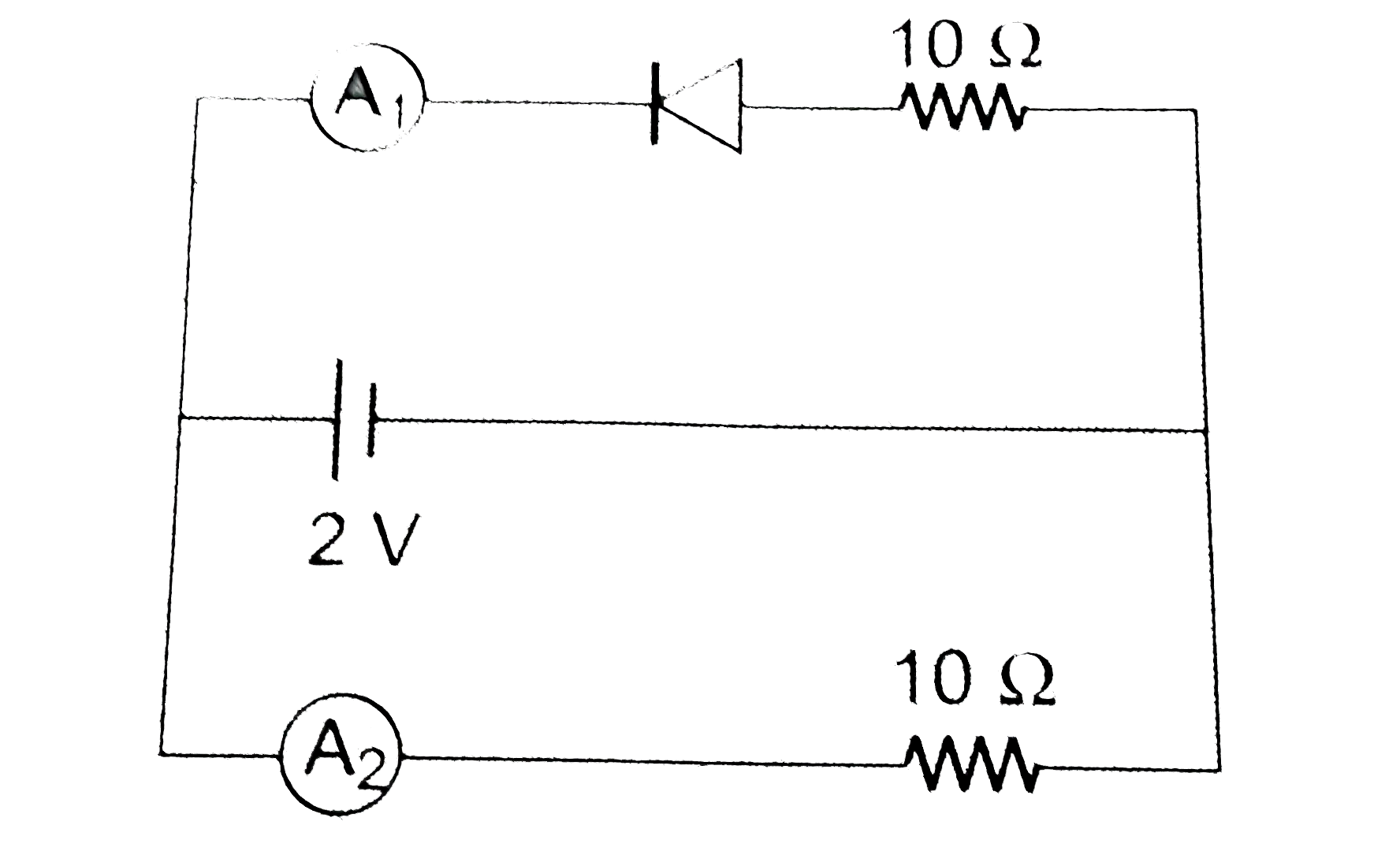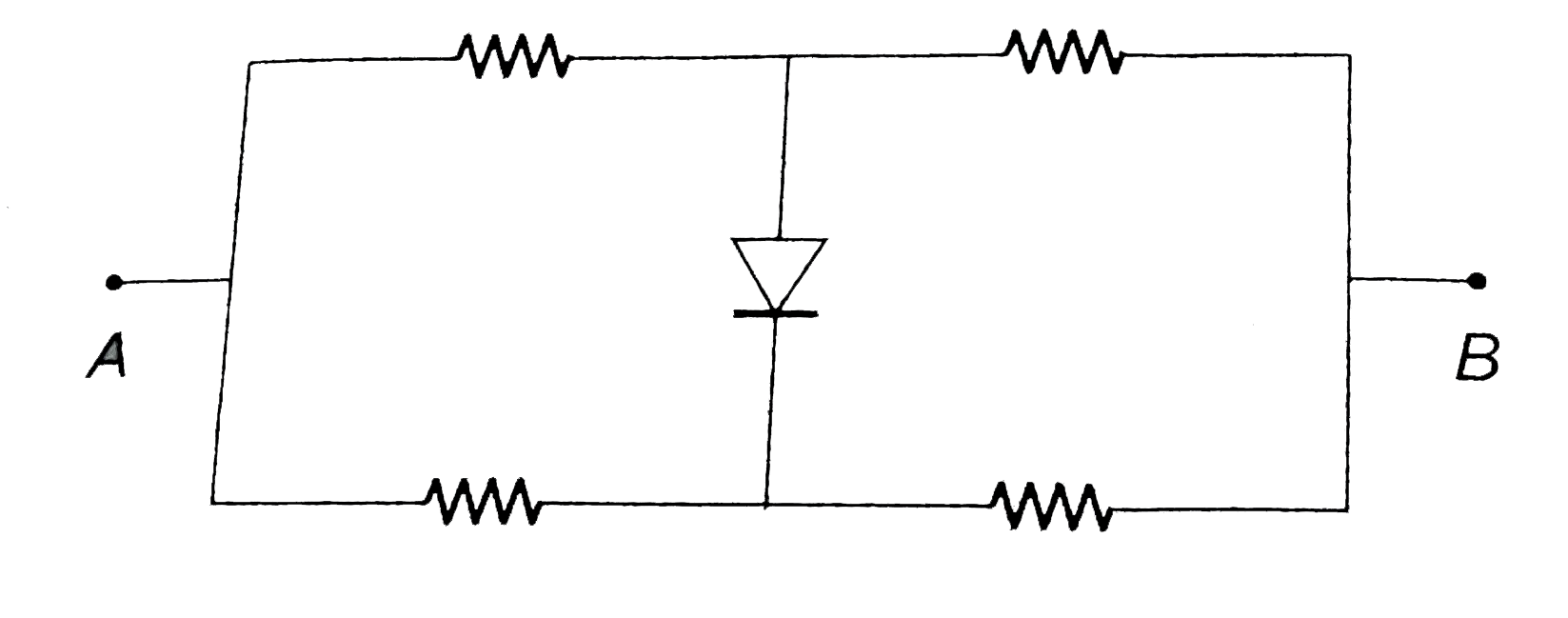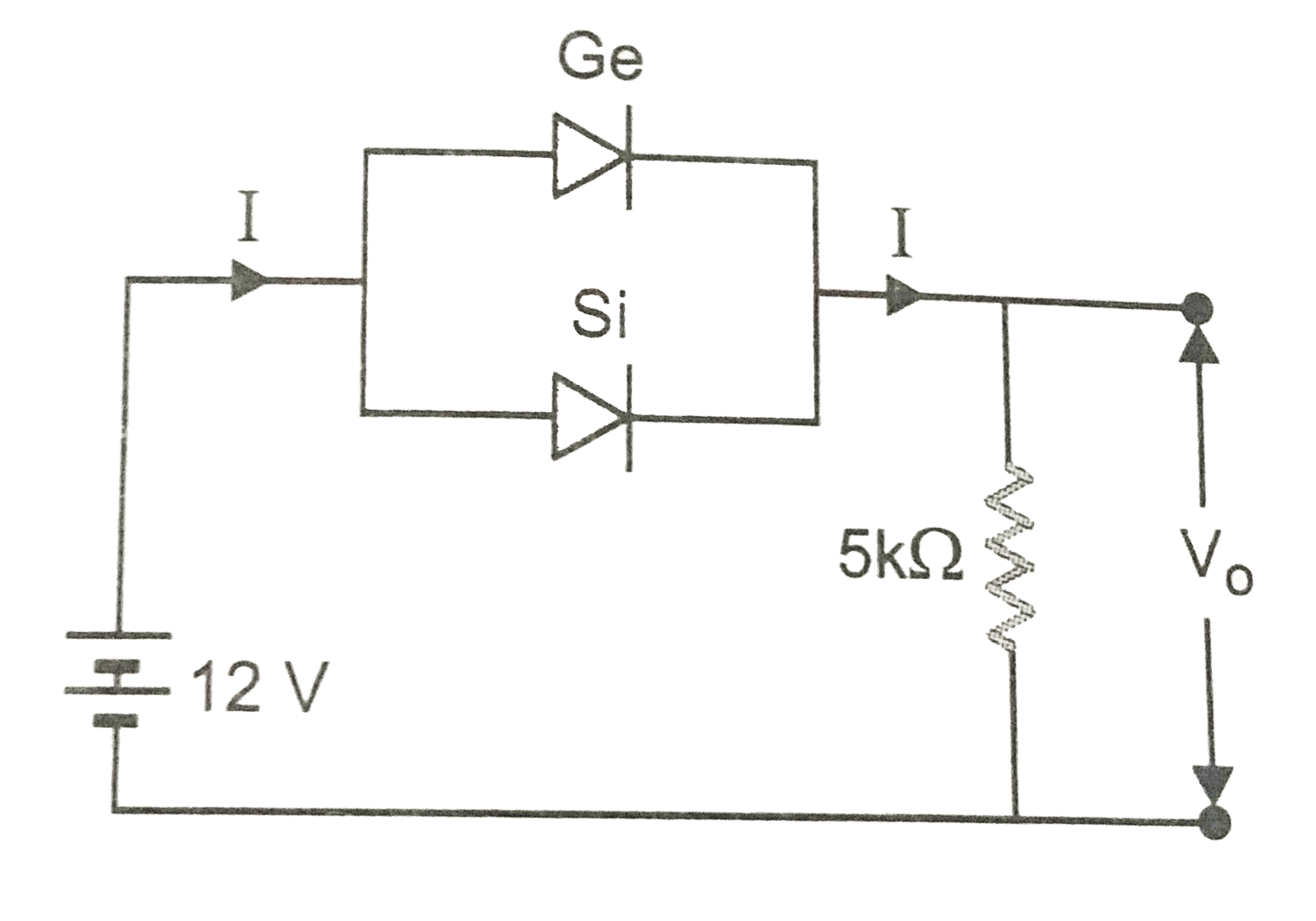Example from CP SINGH PHYSICS Chapter 17 SEMICONDUCTORS for Class 12
| Class 12 | PHYSICS |
| Chapter | SEMICONDUCTORS |
| CP SINGH PHYSICS | Example |
| Medium | English |
| Academic Year | 2023-2024 |
Question 3
The concertration of hole-electron pairs in pire silicon at T=300K is 7×1015 per cubic metre. Antimoy is doped into silicon in a proportion of 1 arom in 107 atoms. Assuming that half of the inpurity atoms contribute electrons in the conduction band, calculate the factor electrons in the conduction band, calculate the factor by which the number of charge carriers increase due to doping. the number of silicon atoms per cubic meter is 5×1028.View SolutionQuestion 4
The energy gap of pure Si is 1.1eV The mobilities of electrons and holes are respectively 0.135m2V−1s−1 and 0.048m2V−1s−1 and can be taken as independent of temperature. The intrinsic carrier concentration is given by ni=n0e−Eg/2kT.
Where n0 is a constant, Eg The gap width and k The Boltmann's constant whose vaue is 1.38×10−23JK−1 The ratio of the electrical conductivities of Si at 600K and 300K is.View SolutionQuestion 5
Find the current produced at room temperature in a pure germanium plate of area 2×10−4m2 and of thickness 1.2×10−3m when a potential of 5V is applied across the faces. Concentration of carries in germanium at room temperature is 1.6×106 per cubic metre. The mobilities of electrons and holes are 0.4m2V−1s−1 and 0.2m2V−1s−1 respectively. The heat energy generated in the plate in 100 second is.View SolutionQuestion 6
If resistivity of pure silicon is 3000Ωmeter, and the electron and hole mobilities are 0.12m2V−1s−1 and 0.045m2V−1s−1 respectively, determine the resistivity of a specimen of the material when 1019 atoms of phosphorous are added per m3 are also added. Given charge on electron =1.6x10−19C.View SolutionQuestion 7
(a) Find the conductivity of intrinsic silon at 300K. It is given that ni at 300K in silicon is 1.5x1010/cm^(3) and the mobilities of electrons and holes in silicion are 1300cm2/V−sec and 500cm2/V−sec respectively.
(b) if donor type impurity is added to the extent of 1 impurity atom in 108 sillicon atoms, find the conductivity.
(c ) if acceptor inpurity is added to the extent of 1 impurity atom in 108 silicon atoms,find the conductivuity.
Given: number of a→ms/m3 for Si=5×1028 View SolutionQuestion 9
A potential barrier of 0.3V exists across a p−n junction.
(a) if the depletion region is 1μm width. What is the intensity of elctric field in this region ?
(b) An electron with speed 5×105m/sec approaches this p−n junction from n-side, what will be its speed on entering the p-side?View SolutionQuestion 10
In the following problems, assume that the resistance of each diode is zero in forward bias and infinity in reverse bias .
(a) Find the current supplied by the battery in the following cases. (b) Find the currents through the resistance in the circuits shown in the figures.
(c ) Find the current through the battery in each of the circuits shown in the figures.
(d) Find the equivalent resistance of the network shown in the figure between the points A and B.

 View Solution
View SolutionQuestion 11
(a) What are the readings of the ammeters A1 and A2 shown in the figure.neglect the resistance of the meters.
(b) Calculate the current through the circuit and the potential difference across the diode shown in the figure. The drift current fo the diode is 20μA.
(c ) Each of the resistances shown in the figure has a value of 20Ω. find the equivalent resistance between A and B. Does it depend on whether the point A or B is at higher potential?


 View Solution
View SolutionQuestion 13
A silicon diode is connected to a load resistance RL as shown in the figure. If V∈=15V and RL=10kΩ
(a) If barrier voltage, VB=0.7V then calculate
(i) output voltage across RL
(ii) current in diode and ltbRgt (iii) forward resistance.
(b) If diode is assumed ideal, then what will be
(i) output voltage and
(ii) output current in diode?
 View Solution
View SolutionQuestion 18
Ap−n−p transistor is used in common-emitter mode in an amplifier circuuit. A change of 40μA in the base current brings a change of 2mA in collector current and 0.04V in base-emitter volatage. Find the
(a) input resistance ri and
(b) the base current amplification factor (β).
(c ) if a load of 6kΩ is used, then also find the voltage gain of the amplifier.View SolutionQuestion 19
A transistor is used in common-emitter mode in an amplifier circuit. When a signal 20mV is added to the base-emmiter voltage,the base current changes by 20(μ)Aand the collector current changes by 2mA.The load resistance is 5k(Ω).Calculate (a)the factor(β)(b)the input resistance RBE,(c) the transconductance and (d) the voltage gain .View SolutionQuestion 20
A load resistor of 2kΩis connected in the collector branch of an amplifier circuit using a transistor in common-emitter mode.The current gainβ−50.The input resistance of the transistor is 0.50kΩ. If the input current is changed by 50μA,(a)by what amount soes the output voltage change by ,(b)by what amount does the input voltage change and (c) what is the power gain ?View SolutionQuestion 22
An n−p−n transistor is connected in common emiter configuration in which collector supply is 8V and the boltage drop across the load resestance of 800Ω connected in the collector circuit is 0.8V. If current gain factor is (25/26), determine the collector -emitter voltage and base current. if the internal resistance of the transistor is 200Ω. calculate the voltage gain and power gain. View SolutionQuestion 23
An n-p-n transistor in a common - emitter mode is used as a simple voltage amplifier with a collector current of 4 mA. The positive terminal of a 8 V battery is connected to the collector through a load resistance RL and to the base through a resistance RB . The collector - emitter voltage VCE=4V , the base - emitter voltage VBE=0.6V and the current amplification factor β=100 . Calculate the values of RL and RB . View Solution

